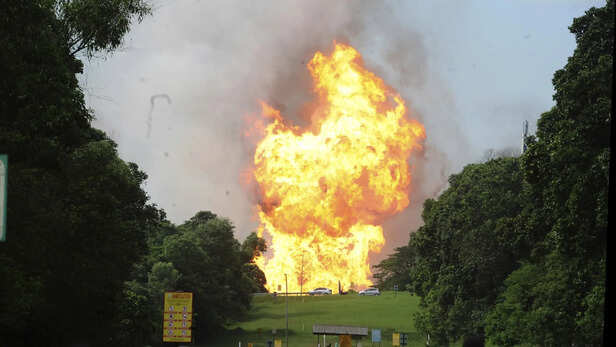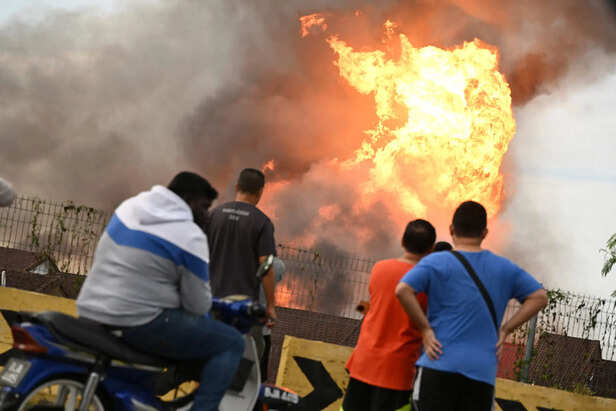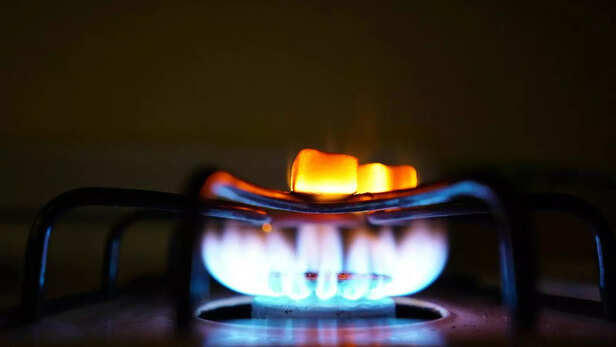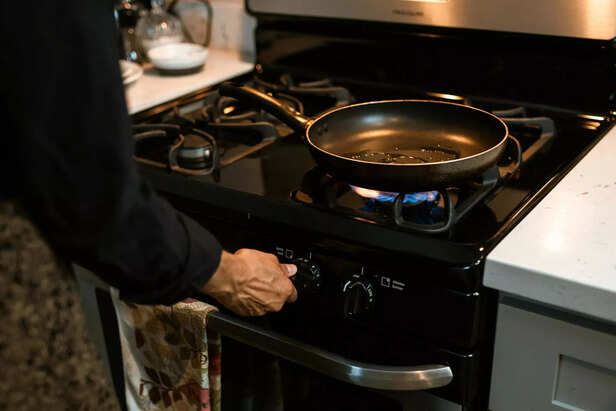Your Gas Stove Might Be Slowly Poisoning You — Here’s How I Found Out
Noopur Bhatt | Apr 19, 2025, 19:45 IST
BURNER
( Image credit : Pexels )
It started with a headache—and almost ended in tragedy. What if the fatigue, dizziness, or breathlessness you feel isn't just stress or weather change, but something silently poisoning your home? In a country where millions use LPG daily, this hidden danger lurks in plain sight. One yellow flame was all it took to open my eyes. Read this real-life warning—it might just save yours.
I understand that you're wondering, "Why did I just turn off the gas?" I was experiencing unusual fatigue a few days ago, along with a heavy head and even breathing difficulties. At first, we thought it might be a vitamin deficit. We attempted various home treatments and conducted some tests, but to no avail. Something snapped today when I saw a yellow flame emerging from the gas burner. I understood that it might be carbon monoxide poisoning, a deadly yet silent hazard that lurks in our own kitchens.The odorless, invisible gas known as carbon monoxide (CO) has the potential to be fatal. This unseen risk is more prevalent than we may think in India, where millions of homes continue to use LPG stoves without adequate ventilation. Let's explore the dangers of carbon monoxide, how to spot its signs early, and what you can do to keep yourself and your loved ones safe.

The incomplete burning of fuels such as gas, wood, coal, or kerosene produces carbon monoxide, an odorless and colorless gas. When these fuels are burned in an area with inadequate ventilation, the gas accumulates in the space without being able to leave. Why is it lethal? It forms carboxyhemoglobin by binding to our blood's haemoglobin 230 times faster than oxygen. Tissue hypoxia, a severe condition that can harm your heart, brain, and other essential organs, results from this obstruction of oxygen flow to your organs and tissues.

The symptoms of carbon monoxide poisoning can be easily mistaken for everyday fatigue or seasonal flu:

The fact that this flame was yellow rather than the typical blue one was the true hint in my instance. Carbon monoxide is produced when incomplete combustion occurs, as indicated by a yellow or orange flame on a gas stove. This indicates that the gas in your stove is not burning efficiently, and you may be unknowingly inhaling harmful pollutants. Always watch your stove’s flame. A clean, efficient burn should produce a sharp blue flame. Anything less than that is a red flag.

Indian kitchens tend to be small, confined, and poorly ventilated. There are either no exhaust fans or they are not working. To stay warm throughout the winter, we keep our windows and doors closed, which traps more dangerous gases inside. The use of outdated or badly maintained stoves is another factor that contributes to the accumulation of carbon monoxide. Over time, even minor leakage can become fatal.

For both your heart and brain to work, oxygen must be continuously available. Your red blood cells' ability to carry oxygen is blocked when carbon monoxide attaches itself to them. This leads to confusion, difficulty thinking, weakness, and irregular heartbeat. In extreme situations, heart attacks and brain damage may happen before you ever realise it. Early detection is therefore essential.

Here’s what you can do immediately to protect your family:
If you or someone you know is showing symptoms:
A Lesson I’ll Never Forget
Everything changed for me because of that one yellow flame. I was awakened by it. But what if I hadn't seen it? What if we had ignored our symptoms and kept using the stove? I'm afraid to consider it. Being healthy involves more than simply our diet and level of exercise. Sometimes it's important to pay attention to the simplest symptoms, like a flame, a headache, or a breath, and treat them properly. Thus, pause the next time you enter your kitchen. Take a look at your flame. Take in the air. Take a deep breath—safely. Since your life can be at stake.
Explore the latest trends and tips in Health & Fitness, Travel, Life Hacks, Fashion & Beauty, and Relationships at Times Life!
1. What is Carbon Monoxide and Why is It So Dangerous?

Burst gas
( Image credit : AP )
The incomplete burning of fuels such as gas, wood, coal, or kerosene produces carbon monoxide, an odorless and colorless gas. When these fuels are burned in an area with inadequate ventilation, the gas accumulates in the space without being able to leave. Why is it lethal? It forms carboxyhemoglobin by binding to our blood's haemoglobin 230 times faster than oxygen. Tissue hypoxia, a severe condition that can harm your heart, brain, and other essential organs, results from this obstruction of oxygen flow to your organs and tissues.
2. How Do You Know You’re Being Poisoned? Watch These Symptoms Closely

Burst gas pipe
( Image credit : AP )
The symptoms of carbon monoxide poisoning can be easily mistaken for everyday fatigue or seasonal flu:
- Headache
- Dizziness
- Nausea
- Shortness of breath
- Chest pain
- Confusion or forgetfulness
- Blurred vision
3. The Silent Warning Sign: A Yellow Flame on Your Stove

Yellow Flame
( Image credit : Pexels )
The fact that this flame was yellow rather than the typical blue one was the true hint in my instance. Carbon monoxide is produced when incomplete combustion occurs, as indicated by a yellow or orange flame on a gas stove. This indicates that the gas in your stove is not burning efficiently, and you may be unknowingly inhaling harmful pollutants. Always watch your stove’s flame. A clean, efficient burn should produce a sharp blue flame. Anything less than that is a red flag.
4. The Hidden Risks in Indian Kitchens

HOME KITCHEN
( Image credit : Pexels )
Indian kitchens tend to be small, confined, and poorly ventilated. There are either no exhaust fans or they are not working. To stay warm throughout the winter, we keep our windows and doors closed, which traps more dangerous gases inside. The use of outdated or badly maintained stoves is another factor that contributes to the accumulation of carbon monoxide. Over time, even minor leakage can become fatal.
5. Why Carbon Monoxide Affects the Brain and Heart So Quickly

Brain
( Image credit : Pexels )
For both your heart and brain to work, oxygen must be continuously available. Your red blood cells' ability to carry oxygen is blocked when carbon monoxide attaches itself to them. This leads to confusion, difficulty thinking, weakness, and irregular heartbeat. In extreme situations, heart attacks and brain damage may happen before you ever realise it. Early detection is therefore essential.
6. How to Protect Yourself: Life-Saving Tips for Every Home

home kitchen
( Image credit : Pexels )
Here’s what you can do immediately to protect your family:
- Check your flame: It should be blue. Yellow danger.
- Ensure ventilation: Use an exhaust fan or open a window while cooking.
- Install CO detectors: Carbon monoxide detectors are lifesavers.
- Service your gas appliances: Get your stove, chimney, and cylinder checked every 6 months.
- Avoid indoor coal or wood burning: Never burn fuels in closed spaces
7. First Aid and Medical Emergency: What to Do If Exposed
- Immediately move to fresh air
- Turn off the gas or source of combustion
- Call emergency medical services
- Seek oxygen therapy—a high concentration of oxygen can help remove CO from the bloodstream faster
- In severe cases, hyperbaric oxygen therapy in an ICU may be required
A Lesson I’ll Never Forget
Explore the latest trends and tips in Health & Fitness, Travel, Life Hacks, Fashion & Beauty, and Relationships at Times Life!
